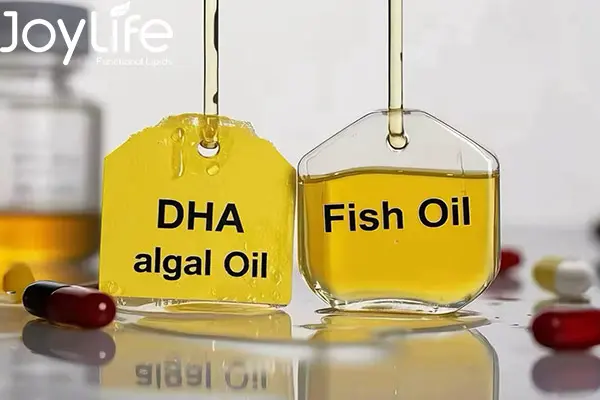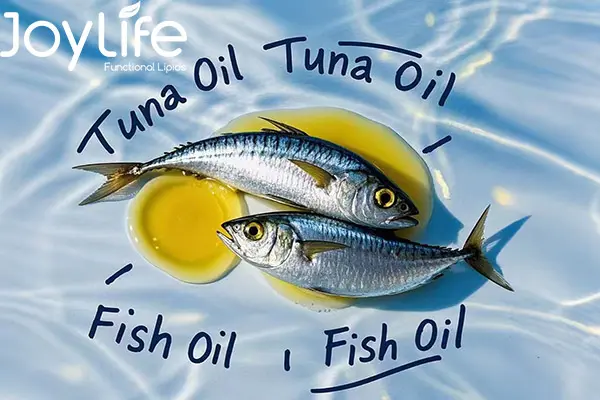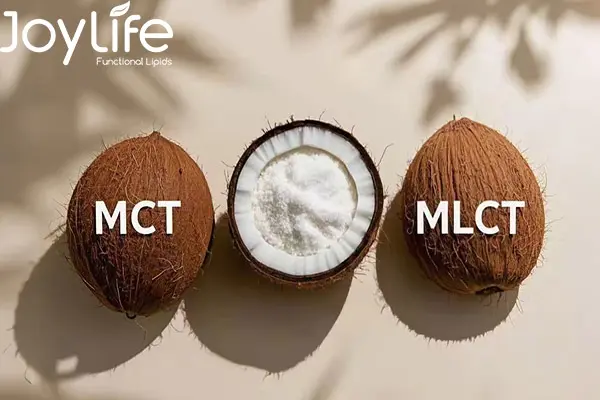



What's the difference between EE and TG Fish oil?
and how to identify them?
Today, Joylife Nutripharma Inc would like to collect some info and share with you,
if you have any more info to share pls kindly feel free to contact us, thanks!
Fish oil supplements are categorized based on their chemical structure and processing methods. The two primary forms are Ethyl Ester (EE) and Triglyceride (TG), with Re-esterified Triglyceride (rTG) being a hybrid form. Here's a detailed comparison:
TG (Triglyceride):
Structure: Natural form found in fish, where Omega-3 fatty acids (EPA/DHA) are bound to a glycerol backbone.
Absorption: Directly absorbed by the body due to similarity to human fat structure. Studies show TG forms have ~91% bioavailability and are more efficient in raising Omega-3 levels in blood cells .
Stability: Less prone to oxidation compared to EE .
EE (Ethyl Ester):
Structure: Omega-3 fatty acids are chemically modified and bound to an ethanol molecule. This allows higher concentration but requires conversion to TG in the body for absorption.
Absorption: Lower bioavailability (~20–73%) due to the extra step of enzymatic conversion, which can lead to losses during digestion
FDA Approval: EE is the only form approved for prescription use (e.g., Lovaza) due to its high purity
TG: Naturally lower in Omega-3 concentration (typically 30–50%) but requires minimal processing
EE: Achieves higher purity (50–90%) through molecular distillation, making it cost-effective for mass production. However, lower absorption offsets this advantage .
rTG: Combines high purity (50–70%) with TG-like absorption by reconverting EE back into TG through enzymatic processes. This form is expensive but offers optimal balance .
TG: More stable and less likely to oxidize, reducing risks of rancidity .
EE: Prone to oxidation, which may generate harmful byproducts like ethanol vapors. Long-term use of high-dose EE has been linked to liver strain in some studies .
TG/rTG: Preferred for children, pregnant women, or those needing rapid absorption (e.g., short-term anti-inflammatory benefits) .
EE: Suitable for long-term cardiovascular support due to FDA approval and high purity, but requires careful dosing to avoid side effects .
1.Labeling:
Check for terms like "Ethyl Ester" (EE) or "Triglyceride" (TG/rTG). Many brands avoid specifying, but high-purity claims (e.g., "90% Omega-3") often indicate EE .
2.EPA:DHA Ratio:
EE products often have EPA > DHA (e.g., 3:2 ratio), while TG forms may have balanced or DHA-dominant ratios (e.g., 1:4 for children’s formulas) .
3.Price and Brand Transparency:
TG/rTG supplements are typically more expensive due to complex processing. Brands like HighQ or Meeqor explicitly state their forms .
EE is cheaper and widely available but may lack absorption-enhancing additives (e.g., antioxidants like vitamin E) .
4.Certifications:
Look for third-party certifications (e.g., IFOS, GOED) that verify purity, oxidation levels, and heavy metal content. EE products often emphasize purity certifications, while TG/rTG brands highlight bioavailability .
5.Physical Tests:
Freezing Test: TG oil solidifies in cold temperatures, while EE remains liquid due to structural differences (note: not foolproof) .
| Aspect | TG Fish Oil | EE Fish Oil |
|---|---|---|
| Structure | Natural triglyceride form | Chemically modified ethyl ester |
| Absorption | High (~91%) | Lower (~20–73%) |
| Purity | 30–50% Omega-3 | 50–90% Omega-3 |
| Stability | More stable | Prone to oxidation |
| Best For | Children, short-term use | Long-term cardiovascular support |
For optimal results, prioritize rTG for high absorption and purity, or choose TG for natural efficacy. Always verify certifications and consult a healthcare provider for personalized advice.
Joylife Nutripharma Inc can offer you both EE, TG or RTG Fish oil, also Fish oil capsules,
if any demand, pls feel free to contact us: sales@joylifenutripharma.com